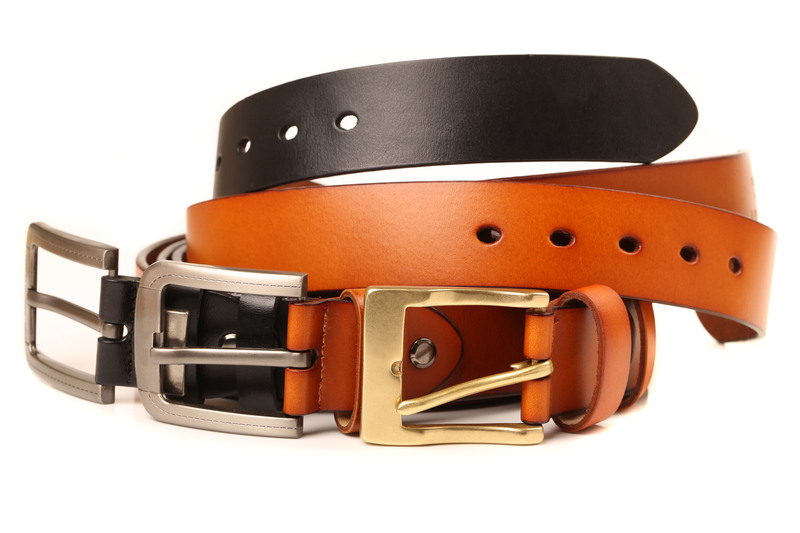Strategies for Preserving Your Sofa: Expert Storage Insights
Posted on 17/05/2025
Strategies for Preserving Your Sofa: Expert Storage Insights
Your sofa is not just a piece of furniture--it's a valuable investment and often the centerpiece of your living space. Whether you are moving, remodeling, or simply creating more room, proper sofa storage is crucial for maintaining its comfort, appearance, and longevity. In this extensive guide, we delve into expert strategies for preserving your sofa through thoughtful storage and practical tips. Read on to discover the secrets to keeping your couch in pristine condition, ready for use whenever you need it again!

Why Proper Sofa Storage Matters
Storing a sofa may seem straightforward, but neglecting the right steps can result in irreparable damage. Moisture, pests, deformation, and dirt are just a few threats your beloved sofa faces when tucked away. By investing time into sofa preservation techniques, you set yourself up for a hassle-free and visually pleasing experience later. Furthermore, well-preserved couches can retain their value, making resale or donation easier.
When Do You Need to Store a Sofa?
- Moving to a new home
- Staging your house for sale
- Temporary relocation for renovations
- Seasonal storage (e.g., outdoor couches)
- Downsizing or decluttering
Whatever the reason, the goal is the same: maximizing the sofa's life while it awaits its next use.
Preparation: The Foundation of Effective Sofa Storage
A successful sofa storage strategy always begins with preparation. Taking the time now to properly ready your sofa pays off with less work and worry later.
1. Clean Thoroughly Before Storage
- Vacuum: Use an upholstery attachment to remove dust, crumbs, and debris from crevices, under cushions, and all surfaces.
- Spot Clean: Tackle any stains using a manufacturer-approved cleaner or a gentle homemade solution.
- Remove Odors: Baking soda can be sprinkled lightly, left for 15 minutes, and vacuumed up to freshen fabric sofas.
- Dry thoroughly: Ensure all moisture from cleaning is gone to prevent mold and mildew during storage.
2. Disassemble When Possible
Many modern couches feature removable legs, cushions, or armrests. Disassembling your sofa allows for safer, more compact storage and reduces the risk of breakage. Keep screws, bolts, and small hardware in labeled bags attached to each respective part so reassembly is smooth.
3. Protect All Surfaces
- Wrap Upholstery: Use specialized furniture covers, breathable drop cloths, or thick blankets to shield against dust and spills.
- Avoid plastic sheeting if possible, as it can trap moisture and promote mildew.
- Cover delicate features: Bubble wrap or soft towels can be used around wood trim, corners, or ornamentation for extra protection.
- For leather sofas: Condition the leather with a proper cleaner and then cover with a soft, breathable fabric cover.
4. Label and Document
Take a few photos and make notes on the condition of your sofa before storage. This documentation helps in case you need to file a claim for storage insurance.
Choosing the Right Sofa Storage Location
Not all storage options are created equal. The location you select plays a significant role in the successful preservation of your couch.
1. Climate-Controlled Storage Units
- Best for long-term storage: These spaces maintain consistent humidity and temperature, protecting your sofa from warping, cracking, or mildew, especially for leather or antique pieces.
- Peace of mind: Reduce the risks of pests or severe seasonal temperature fluctuations.
2. In-Home Storage
- Choose a clean, dry area like a finished basement, spare room, or even a large closet.
- Avoid garages, sheds, or attics where temperature and humidity are extreme and unpredictable.
3. Professional Storage Facilities
If you're storing multiple items or planning long-term storage, a reputable furniture storage company offers handling expertise and security that generic self-storage often lacks.
Expert Tips for Maximum Sofa Preservation
1. Store Off the Floor
Always elevate your sofa above ground level, even in the cleanest storage unit. Use pallets, risers, or bricks to avoid potential water damage from flooding or condensation. This also keeps airflow circulating underneath, which discourages mold and pest infestations.
2. Maintain Air Circulation
- Don't press your sofa flush against walls or other furniture, as this can trap moisture and cause warping.
- Leave a few inches around all sides, especially at the back and bottom, to allow for healthy airflow.
3. Prevent Compression Damage
- Never stack heavy items atop your stored sofa, as this can deform cushioning and frames.
- If you must stack, use *only* lightweight, soft items like pillows or towels and avoid resting them for prolonged periods.
4. Pest-Proof Your Storage Space
- Inspect the storage area before moving in for any signs of insects or rodents.
- Use deterrents like lavender sachets, cedar blocks, or mothballs around--never directly on--the sofa.
- Seal small gaps and cracks in the room or unit to keep critters out.
5. Regular Inspections Are Key
If possible, visit your storage site every month or two. Check for signs of moisture, mold, nesting pests, or shifting. Catch issues early so you can address them before they ruin your couch. Move or fluff cushions to keep them airy and well-shaped.
Addressing Specific Sofa Materials: Tailored Storage Methods
Fabric Sofas
- Vacuum and spot-clean before storage, focusing on removing all organic matter.
- Cover with breathable cloth covers--avoid plastic.
- Keep away from direct sunlight, even in storage, to prevent fading and fiber weakening.
Leather Sofas
- Clean with a gentle, leather-safe cleaner and let air dry completely.
- Use a conditioner to prevent dryness and cracking.
- *Do not* store in humid or unconditioned places; leather absorbs moisture and molds easily.
- Cover with towels or a breathable slipcover; never plastic.
Sectionals and Recliners
- Disassemble into smaller components for easier handling and protection.
- Take care to note how power cords, levers, or connectors are detached and stored.
- Wrap moving parts individually to avoid scratches or mechanical issues.
Antique and Delicate Sofas
- Consult a furniture preservation specialist if the piece is of significant value.
- Carefully document condition, including all existing damage, before storing.
- Use acid-free papers or specialty archival wrappings to pad fragile areas and minimize wood-on-wood contact.
How Long Can You Store a Sofa?
The duration that a sofa can be safely stored depends on your adherence to best practices. With proper preparation and a climate-controlled environment, your sofa can rest comfortably for years. However, aim to check its condition every 6 to 12 months and recondition or reshape it as needed, particularly with leather and antique pieces.
Common Mistakes to Avoid When Storing Sofas
- Storing while wet or damp: This is a recipe for mold, mildew, and odor.
- Using non-breathable plastic wrap directly on upholstery.
- Leaving cushions and pillows in direct sunlight, even indoors.
- Ignoring pest control in storage spaces.
- Stacking heavy boxes or furniture on sofa frames or cushions.

Bringing Your Sofa Out of Storage
When it's finally time to bring your sofa home, take the following steps for a seamless transition:
- Unwrap and inspect all parts carefully for possible damage or pests.
- Let the sofa air out for a few days in a ventilated, dry space before use.
- Vacuum and spot clean again to freshen, removing any dust or odors picked up in storage.
- For leather, re-condition the surface to restore suppleness and shine.
- Reassemble and check all joints, hardware, and mechanisms for stability.
Conclusion: Enjoy Lasting Comfort and Beauty
With these expert sofa storage strategies, you can rest assured that your couch will emerge from storage as inviting and beautiful as the day you put it away. Proper storage is about more than protection--it's about respect for your investment and future comfort.
Take the time to clean, disassemble, wrap, and select the right space for your sofa. Avoid the common pitfalls, and don't forget to check in on your stored sofa periodically. Should you need help, reputable furniture storage professionals offer peace of mind with skilled handling and the right facilities.
Preserving your sofa through optimal storage practices guarantees years of continued enjoyment, making every minute you invest today worthwhile in the long run. Remember, your sofa deserves just as much care in storage as it gets in your living room--follow these strategies, and you'll be sitting pretty for years to come!



